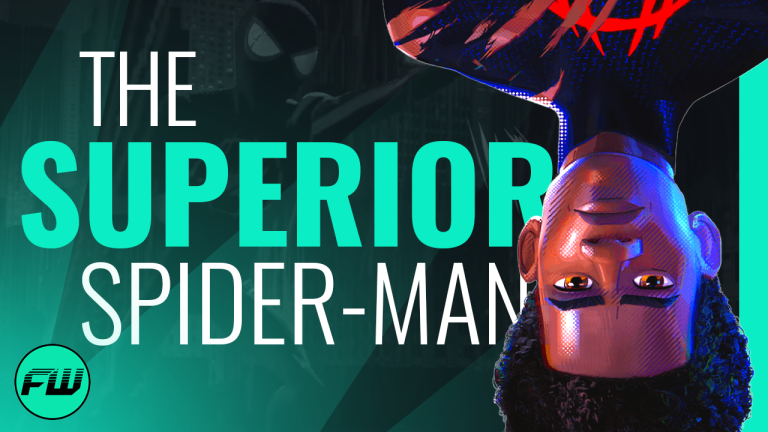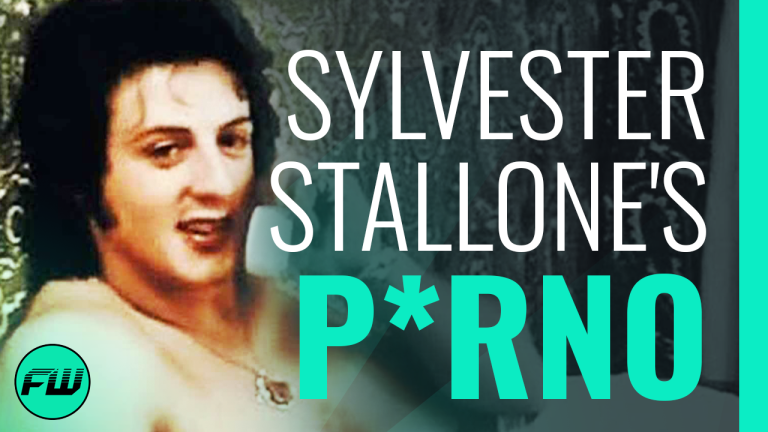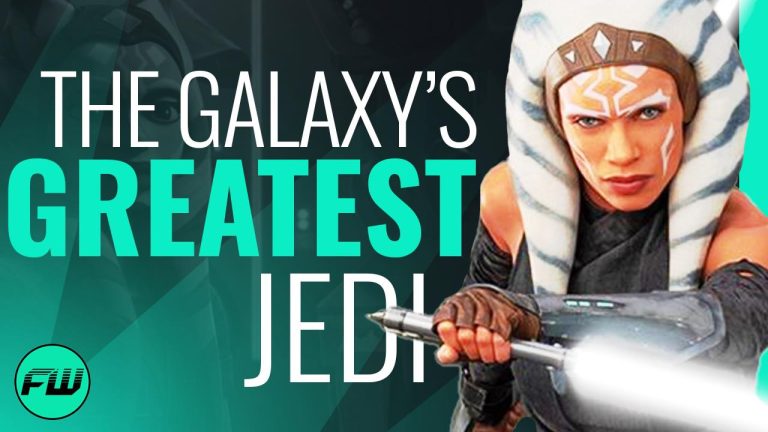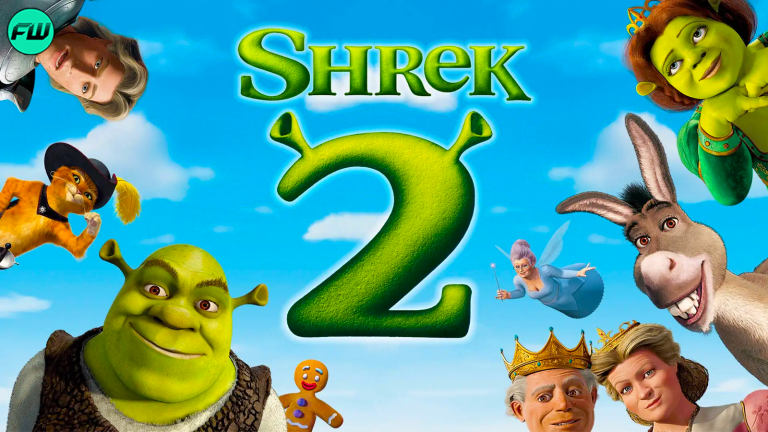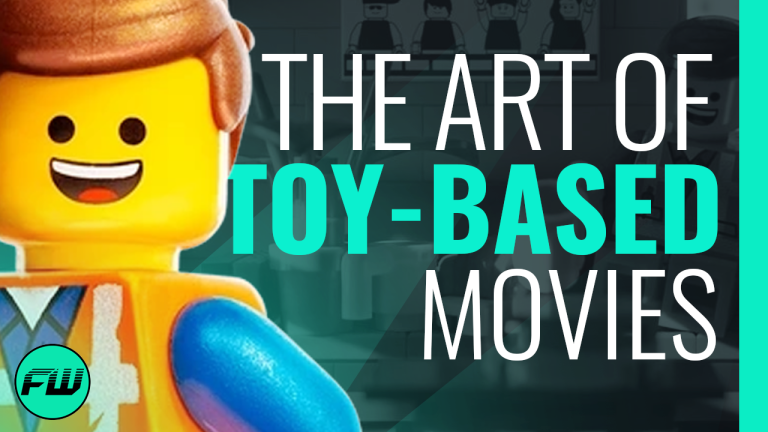Sonic The Hedgehog has now proven he’s capable of leading a successful film franchise, but long before he graced the big screen he started as the Mascot of SEGA. The world’s fastest hedgehog has had a wild history that spans numerous consoles and games. So, join us as we take a deep dive into the pixelated world of Sonic’s origins and explore his journey to becoming a timeless video game icon.
Check out the video below:
???? Subscribe & hit the Notification Bell so you never miss a video!
Who is the most iconic character in gaming? If you’ve been alive for the past few decades, one of the names that should cross your mind is Sonic The Hedgehog. But what if I told you that if you asked three different people to show you what sonic looks like, you may get three different answers. This is in due part to how many generations and forms of media he has affected, from games to now even movies. With so many other franchises failing to keep up with the supersonic hedgehog it poses the question, How is Sonic seemingly winning the race against time?
Related: Sinbad’s Shazaam: The Movie That Never Existed (VIDEO)
It’s the late 1980’s and after releasing hits after hits it was not soon after that the juggernaut Nintendo was crowned the king of gaming consoles. However, that’s not to say they were without competition, with both Atari and Sega releasing consoles in attempts to rival the Super Mario Maker. But these consoles stood no chance as Nintendo had already created household names in Super Mario, Metroid, Zelda, and more. Sega, although did get a headstart on Nintendo in the next generation, 16-bit consoles, with the release of the famous Sega Genesis. Not only were the graphics the best we’ve seen on a household console at the time, its games appealed to an older demographic than Nintendo. Although it sounds like Sega would now lead the battle they fell once again to Nintendo. That’s when they realized if they wanted to take the throne of the gaming market, they would have to overthrow the king. Sega decided to tackle the issue head-on coming up with plans for their very own mascot.
It all took form on June 23rd, 1991 when Sonic debuted in his first self-titled solo game, and he took off running, see what I did there? Sonic was far from the first side scroller to hit shelves, so how did it beat the competition? Sonic 1 came to be a direct competitor for one of the most famous characters, possibly even the face of gaming, Super Mario. Although both games were side scrollers that seems to be where the similarities end, as I said, Sonic hit the ground running. Played on a 16-bit console, Sonic The Hedgehog seemed to be the most expressive and likable protagonist anyone has ever seen. When starting to run sonic would seem sluggish, but once gaining speed it felt as if the player were gliding. Not to mention the iconic frustrated tapping of his foot if you were to put down the controller for a few seconds. The zones in Sonic The Hedgehog also boasted a unique system. With an emphasis on speed, players no longer had to crawl through the game, as Sonic not only didn’t have a run button, he was fast by default.
With great reactions from audiences Sonic soon became Sega’s pack-in-game for the Genesis, solidifying Sega and Sonic as a true force to be reckoned with in the gaming industry, a position they aim to maintain by keeping their mascot running, running get it? Throughout the early 90s Sonic The Hedgehog saw a ton of sequels, all of which introduced new faces to the series. This included Sonic The Hedgehog 2, Sonic CD, Sonic The Hedgehog 3, and Sonic and Knuckles. Sonic 2 introduced a side character named Tails, as well as the now-classic, “spin dash” move, allowing players to pause momentarily to gain a massive amount of momentum. Sonic CD introduced the characters Amy Rose and metal sonic to the series, while Sonic 3 added the addition of the character Knuckles. Knuckles was soon made a playable character in Sonic and Knuckles boasting his own unique set of abilities and levels.
In 1996 Sonic started to lose his flame, as the 16-bit era he grew famous for was on its way out. A new generation was being sworn in, one that ditched 2-D pixels for a new world of 3-D polygons. In fact, Sega was one of the earliest in the 3D landscape, with the Sega Saturn having already been out a year before, which may have done more harm than good. Mario soon made his jump to 3-D and new competitors were springing up left and right, further advancing the shift into the new dimension, including the likes of Crash Bandicoot and Super Mario 64. Now the Sonic Team was posed with the question, of how to bring their beloved mascot to 3-D. With struggles to find a way to successfully bring Sonic over, the Sega Saturn ultimately failed as a console, but that’s not to say Sega was done yet.
On September 9, 1999, Sonic Team released the highly acclaimed Sonic Adventure for the Sega Dreamcast. Sonic Adventure was a hit, becoming the best selling title for the Dreamcast and ultimately paving the way for the fan-favorite Sonic Adventure 2 to be made, as well as Sonic The Hedgehog Pocket Adventure, which marked Sonic’s first release on a non-sega owned console, a practice that would unfortunately soon become very common as the Dreamcast just couldn’t stay afloat in a market that now had both the Playstation 2 and Xbox as direct competitors.
The Sega Dreamcast was discontinued shortly after the release of Sonic Adventure 2 and following its early retirement, Sega decided to find its way out of the console market to focus more as a 3rd party developer. This led to both Sonic Adventure 1 and 2 to be ported to, of all things, the Nintendo Gamecube. That’s right our Super-Speeded friend has now been released on a Nintendo console, which back in the day, was a pretty big deal.
Unfortunately after becoming multi-platform, Sonic has been a little all over the place. In the handheld market sonic kept things mostly old school taking on the 2-D side scroller once again, with titles like Sonic Advance and Sonic Rush. The Sonic games on console, however, Oh boy. At this time it seemed Sonic Team didn’t know what to do with their series which led to a heap of games with different playstyles and mechanics. For example, 2004’s Sonic Heros which revolved around team gameplay, or even 2005’s Shadow The Hedgehog which tried to take the series on a darker path by adding guns, SO MANY GUNS. After many failures, Sega decided to scrap everything and re-boot the entire series for Sonic’s 15th anniversary. This resulted in the release of the disaster of a title, Sonic The Hedgehog 2006, on both the Playstation 3 and Xbox 360. Although returning to the Sonic Adventure formula, Sonic 06 was an unpolished, glitch-ridden mess that is now regarded as one of the worst video games of all time, and if you want to know why just look at this, this is what Sega released for the 15th anniversary for their most iconic character, and not to mention this horrible, horrible scene.
As we stand now Sonic Team’s best chance at reviving the franchise, was also the closest they’ve ever been to killing it. Despite selling well, Sonic 06 was given a median score of 4.5/10 and would go down as the point that Sonic hit rock bottom. One might think that now would be the time to take a step back and recollect themselves, but that person would be wrong because that’s the exact opposite of what Sonic Team did.
The Sonic series continued to see new releases almost every year, and not to say they didn’t learn from their mistakes but it’s clear post-Sonic 06, Sonic was still struggling to find his footing. This is shown in Sonic’s very next game, developed alongside Sonic 06, Sonic and the Secret Rings, which was released in 2007 on the Wii. Sonic and the Secret Rings put Sonic in an almost temple-run feeling environment where the player controls Sonic from behind while he endlessly runs forward. The game received below-average reviews but managed to create some spiritual successors on mobile in Sonic Dash and Sonic Dash 2, and even a sequel titled Sonic and the Black Knight which saw sonic take the place of King Arthur, and gave him a sword. As you may have guessed, that didn’t do so well either. But all was not lost for Sonic fans, for in between these games, Sega released the title Sonic Unleashed for the Playstation 2, Playstation 3, Xbox 360, and the Wii in 2008. This game was split into two halves. The first half was a fast-paced 3-D platformer where you play as Sonic, but the second half was more of a hack-and-slash, turning Sonic into a werewolf named the werehog. It was a mixed bag and this is reflected in the games review scores. While the werehog gameplay was messy and boring, the daytime platforming levels left a feeling of wanting an even more polished version of this. And that’s exactly what Sonic Team did.
Sonic team spent most of the early 2010s bringing Sonic back to his roots, starting in 2010 with the release of Sonic The Hedgehog 4: Episode 1. As the name would suggest Sonic 4 was a short, 2-D side-scrolling throwback to the original trilogy. But this was far from the most popular Sonic game in 2010 as in November, Sonic Colors released. While the Nintendo DS version reminded fans very much of the Sonic Rush series, the Wii version was praised as Sonic’s true return to form. This game took the daytime side-scrolling concepts from Sonic Unleashed and expanded upon them all while adding a beautiful and colorful batch of levels for Sonic to sprint through. Colors also introduced new powerups to the series named Wisps, which would come to find themselves appearing in multiple other Sonic games. Upon its release Sonic Colors received heavy praise, becoming the most positively reviewed, and purchased home console Sonic title since Sonic Adventure 2. Following the undeniable success of Sonic Colors, Sonic was coming up on yet another anniversary, his 20th. At this point we all know how the last anniversary went down, so Sonic Team decided to play this one safe, which is exactly what they needed to do.
In 2011 the world was given Sonic Generations, released on the PS3, Xbox 360, PC, and Nintendo 3DS. The story with the DS version is fairly the same, maintaining the same 2-D vibe as the Sonic Rush game. The console game, however, was much more, as it was praised as one of Sonic’s greatest games in years. Sonic Generations took the core gameplay elements of Colors, while also taking the time to celebrate Sonic’s entire history. The levels in this game were updated remakes of Sonics most iconic zones from over the years, with each level being split into a classic sega genesis 2-D model and the newly adopted 3-D form, meaning for the first time ever, Sonic’s most well-known zones could now be played in both 2-D and 3-D. Mix this with a ton of easter eggs and unlockable content, and Sonic Generations was the anniversary game Sonic 06 dreamed to be. Reviews and sales amplify this as Generations was on par if not better than its predecessor Sonic Colors.
Now Sonic Team had finally dug itself out of the hole it dug for itself after the Sonic 06 release. Fan’s opinions on the series were soon turned around as the idea of having a genuinely good Sonic game was no longer just a hope. With Sonic’s return to the spotlight, Sega struck a deal with Nintendo for the next 3 sonic titles to be exclusively released on Nintendo consoles. And on October of 2013, it was announced that Sonic Team would be teaming up with French studio OuiDO! To produce the latest in a long line of Sonic cartoons based on the Sonic The Hedgehog franchise.
This show was to be known as Sonic Boom and would feature newly redesigned versions of Sonic, Tails, Knuckles, Amy, Dr. Robotnik, and more. The show made its premiere on Cartoon Network in November 2014 and concluded with its second season in 2017.
But here’s where things got messy, as part of their contract with Nintendo, Sega planned to release a set of Video Games based on the Sonic Boom TV series. But for some reason, these games wouldn’t be produced by Sonic Team, but instead outsourced to other third-party developers while Sonic Team overlooked production. In less than a year the world was given Sonic Boom Rise of Lyric for the Wii U and Sonic Boom: Shattered Crystal for the Nintendo 3DS. Although these games did show some promise, they were crushed by the newly added mechanics and controls added for Nintendo consoles, turning out to be almost as bad if not worse of a disaster as Sonic 06.
After this Sonic Team continued to make Sonic games, now no longer bound by their contract with Nintendo, including hits like Sonic Mania and Sonic Forces.
But the biggest news in Sonic’s history came on June 10th, 2014, when it was announced our beloved hedgehog would be receiving his very own movie! And on April 30th, 2019, the first trailer for Sonic The Hedgehog was released, and everyone remembers how that turned out.
Sonic’s design was, and I mean this in the nicest way possible, downright horrible. Fans quickly took to the internet and it wasn’t long after they got Paramount’s attention. Soon after the trailer was re-released, giving Sonic a whole new design, one that wasn’t nearly as hard to look at. On February 14, 2020, Sonic The Hedgehog was released, and although it had to jump through many rings, the film was released to great success, bringing in shortly under 320 million at the box office. Sonic is set to receive his second film this April, which aims to bring both Tails and Knuckles into the story, and with a third movie on the way, Sonic isn’t running away anytime soon.
Sonic The Hedgehog began its journey as one of the most critically acclaimed franchises of its era, it gave Sega the leg up on Nintendo during the 16-bit console wars, solidifying its place in gaming history in the process. As the years have gone on Sonic’s reputation has fluctuated greatly, now becoming one of the most iconic video game franchises of all time. Whether you love it or hate it, the overall success of the franchise is undeniable and while the future of the franchise is uncertain that does change the fact that Sonic The Hedgehog is one of the most important franchises in history, which for better or for worse, is just as relevant as ever.
Follow us for more entertainment coverage on Facebook, Twitter, Instagram, and YouTube.


